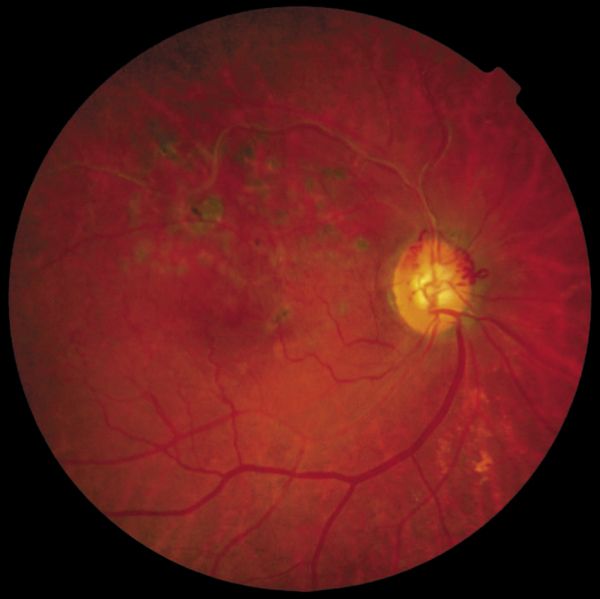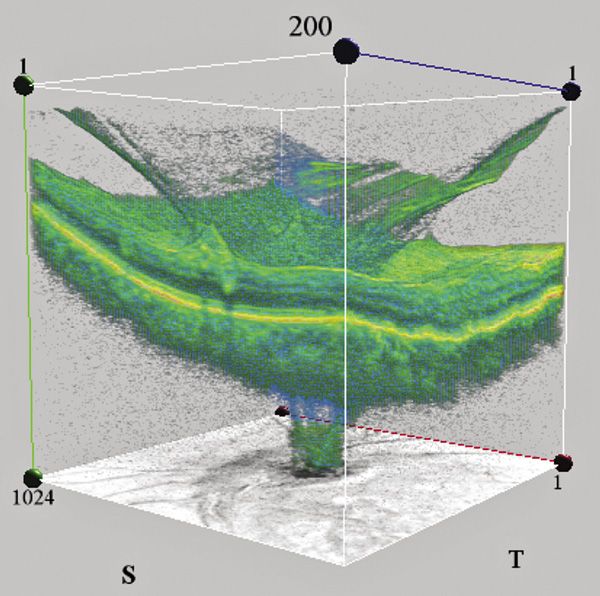You are smarter than your OCT
Spectral domain optical coherence tomography (SD-OCT) is a landmark diagnostic technology. Clinicians should keep top of mind that SD-OCTs, as sophisticated as they are, do not think or interpret. That is solely the job of the clinician. In addition, visually assessing the retinal nerve fiber layer (RNFL) directly can yield more qualitative information than SD-OCT scans provide.
In this age of spectral or Fourier domain optical coherence tomography (SD-OCT), we are almost as close to in vivo histology as we can get. With resolution down to just a few microns, it’s amazing that this technology will likely get even better in the near future. What a fun time to be an optometrist!

Dr. CasellaIt is important to understand that an SD-OCT does not measure what it interprets as human tissue. SD-OCT measures differences in optical reflectivity.1 Now, it happens to measure those differences very well, but when clinicians interpret SD-OCT images, we need to watch out for a ton of potential variables lurking nearby.
Below is a case in which an unrelated finding complicates assessment of the retinal nerve fiber layer (RNFL). This case illustrates how visually assessing the RNFL directly can yield more qualitative information than SD-OCT scans provide.
The patient presents
A 92-year-old African-American female was referred to our clinic for a glaucoma consult by her retina specialist. She had a history of ischemic superior hemispheric retinal vein occlusion (HRVO) OD and a severe cortical cataract OS The patient was status post focal laser OD for HRVO. Entering corrected visual acuities were 20/30 OD and count fingers at 5 feet OS. Intraocular pressures were 16 mm Hg OU. OS posterior segment was obscured by the patient’s cataract. The OD posterior pole is shown in Figure 1. Laser scars are visible in the superior macular area, and the RNFL is noticeably thin superiorly, especially between 10 o’clock and 12 o’clock, where there is essentially no RNFL left. The anomalous vessels on the superior portion of the optic nerve head are shunt vessels.

Figure 1. Fundus photo of the right eye. Laser scars and shunt vessels are seen along with a very thin RNFL superiorly.
We performed Cirrus (Carl Zeiss Meditec) SD-OCT scans of the patient’s OD (Figures 2, 3, and 4); OS scans were unattainable. At first glance, the RNFL didn’t look nearly as bad as it should have, especially superiorly, but it wasn’t until we examined the extracted tomogram and 3-D images that we came to understand just what was throwing off the scan. This patient had a posterior vitreous detachment that was still partially adhered to the optic nerve head and its surrounding tissues. In the areas of adherence, the vitreous had tented up the neurosensory retina, ing which made the RNFL appear thicker in those areas than it really was.
Pachymetry measurements were average OU. The patient was open to ciliary body with no angle neovascularization in either eye by gonioscopy. She was unable to complete visual field studies, and we continue to monitor her for change without treatment.

Figure 2. SD-OCT optic nerve and RNFL printout for the patient’s right eye.
Interpreting the scans
In reviewing this patient’s SD-OCT scans, several points became apparent. First, while it is tempting to jump right to the RNFL thickness deviation when interpreting a SD-OCT printout, a clinician can attain good and meaningful qualitative information from the RNFL thickness map and the extracted tomogram. When the tomogram is compared to the TSNIT curve (Figure 3), it becomes quite apparent that the vitreous adherence to the inner retina surrounding the optic nerve is making this patient’s RNFL look a lot thicker than it really is. We learned more from just looking directly at this patient’s fundus than we did from what the SD-OCT had to say. This should be the case with every patient: We see things clinically and use technology, such as SD-OCT, to confirm or deny what we already suspect.
SD-OCT is, by far, the most exciting and useful advance in diagnostic technology for the human eye since I’ve been in practice. However, it is of paramount importance to realize that SD-OCT, as sophisticated as it is, does not think or interpret. That is solely the job of the clinician.ODT
Reference
1. Puliafito CA, Hee MR, Lin CP, et al. Imaging of macular diseases with optical coherence tomography. Ophthalmology.
1995 Feb;102(2):217-229.

Figure 3. (Above and below) Extracted Tomogram compared to the TSNIT curve-areas of vitreous adherence are noticeably tenting up the inner retina, thus throwing off the RNFL thickness measurements.

Figure 4. 3-dimensional image of the peripapillary vitreous adherences.
Take-Home Message
Spectral domain optical coherence tomography (SD-OCT) is a landmark diagnostic technology. Clinicians should keep top of mind that SD-OCTs, as sophisticated as they are, do not think or interpret. That is solely the job of the clinician. In addition, visually assessing the retinal nerve fiber layer (RNFL) directly can yield more qualitative information than SD-OCT scans provide.
Newsletter
Want more insights like this? Subscribe to Optometry Times and get clinical pearls and practice tips delivered straight to your inbox.





.png&w=3840&q=75)











